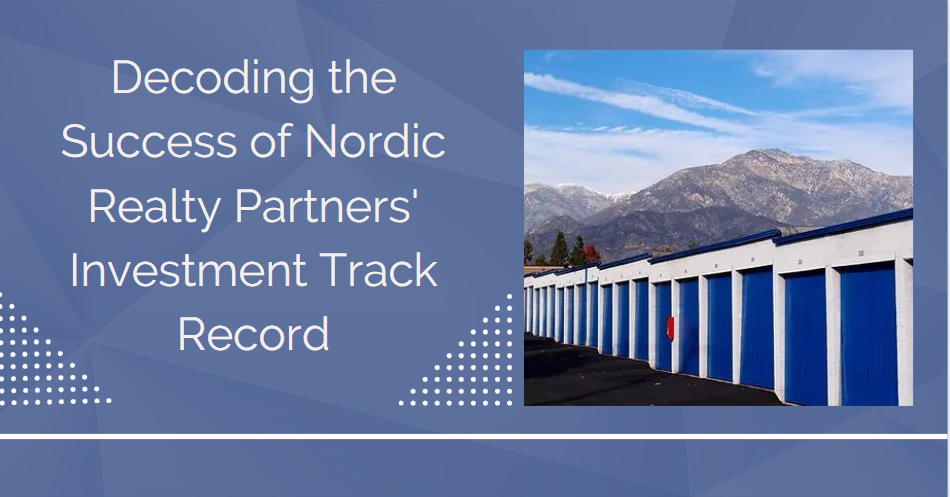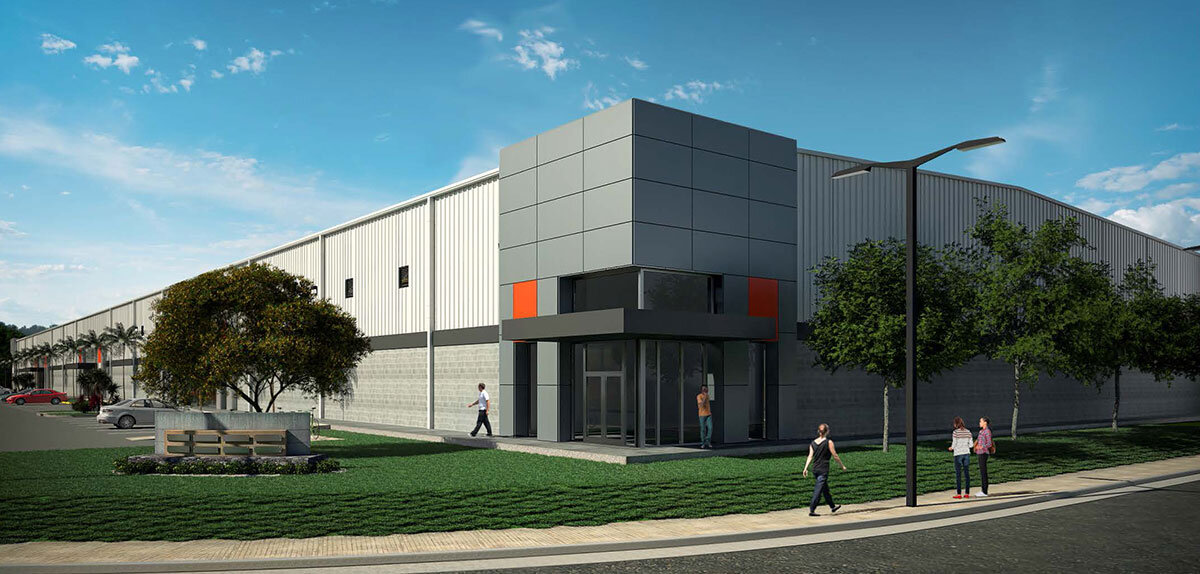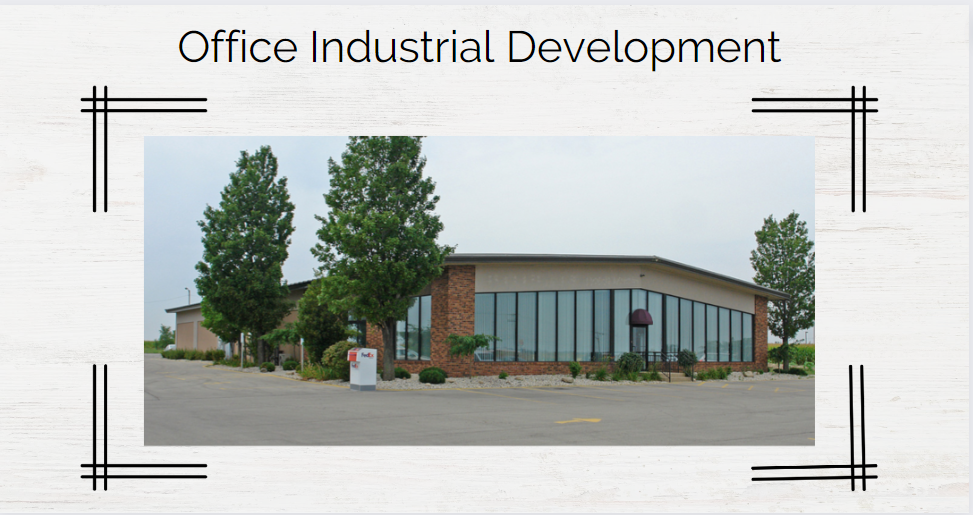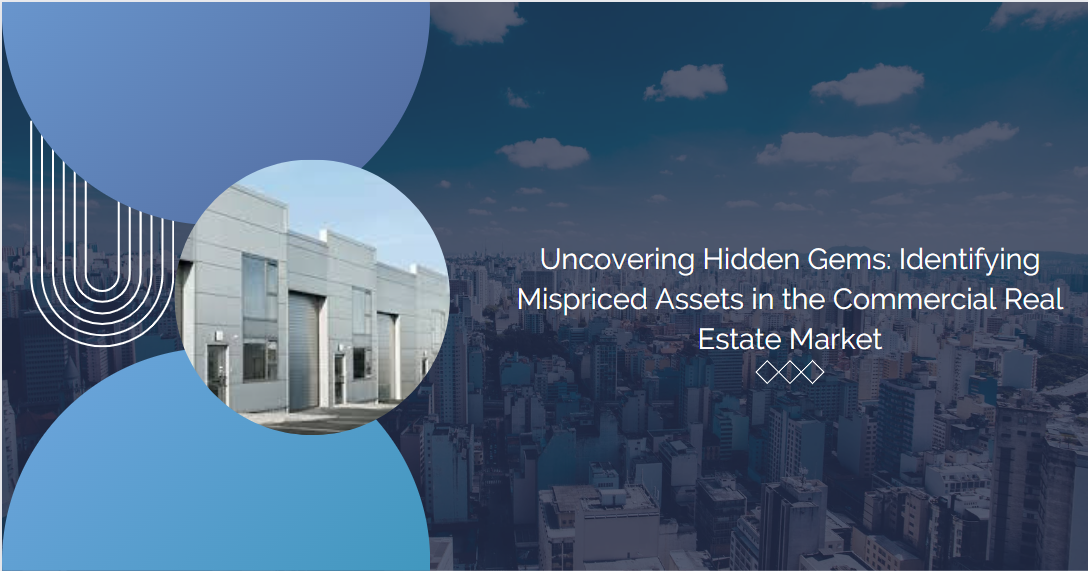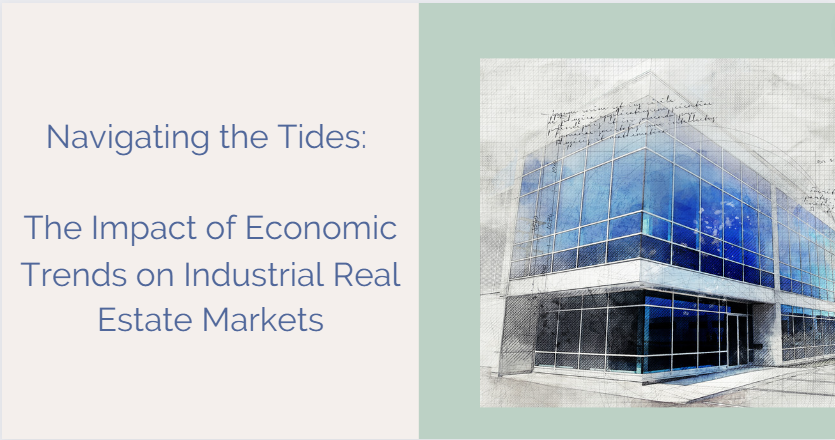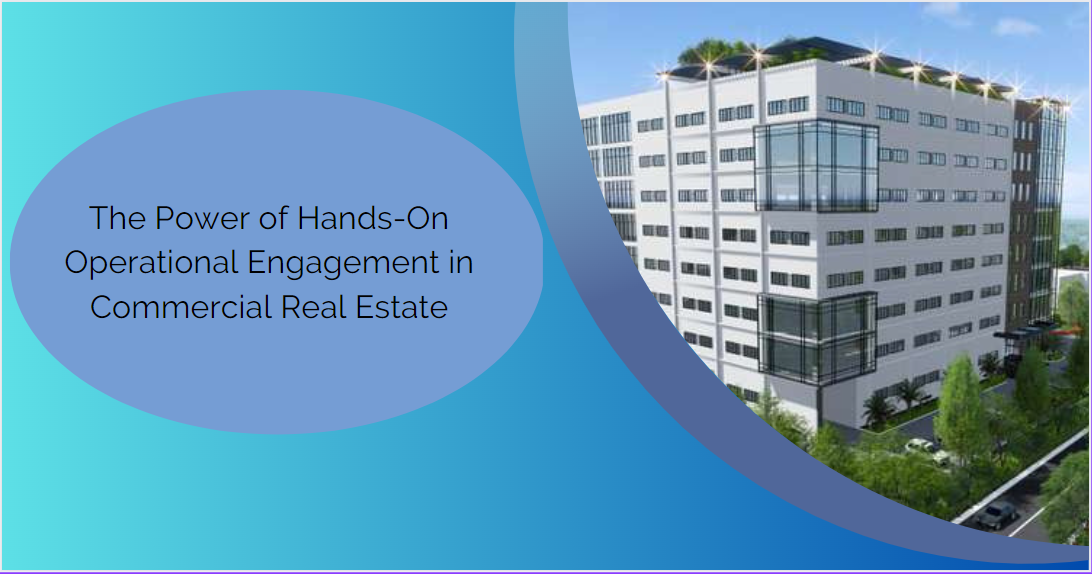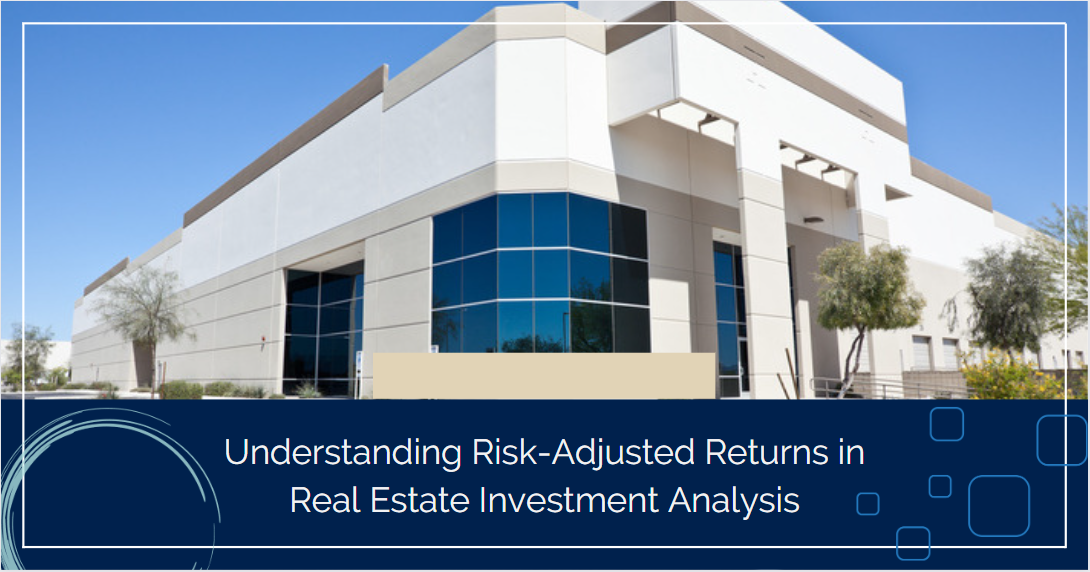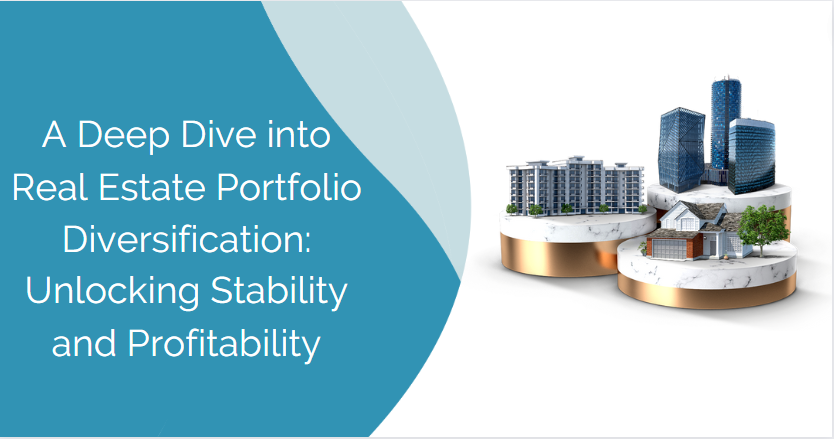We at Nordic Realty Partners understand the importance of a successful investment track record and have worked very hard to achieve ours over the past decade. Our accomplishments are directly attributable to our commitment to comprehensive market research, active asset management, proactive risk management, and a deeply held value for transparency in investor relations.
The process of selecting the right markets for investment is a task we do not take lightly. We focus on areas that demonstrate strong economic and demographic growth. This strategic approach provides a solid basis for investment opportunities and paves the way for tailwinds and potential success.
Our proficiency is not just limited to market selection. We actively manage our assets with the belief that many inefficiencies in commercial real estate can be improved upon. Strategic renovations and operational efficiencies are just some ways we work to enhance a property's profitability.
Risk management is another area where we focus our efforts. Inherent in any business operation, including real estate investing, are risks. At Nordic Realty Partners, we mitigate these potential challenges through a meticulous due diligence process. We aim to understand fully each asset's strengths and weaknesses, the current market phase, and appropriate capital structuring. This careful approach helps us prepare for any potential market downturns or volatility.
We take great pride in our commitment to transparency and strong investor relations. We understand the significance of clear, timely communication with our clients. By keeping our investors well-informed, we enable them to make confident decisions.
The success of Nordic Realty Partners reflects our effective approach to real estate investing. Our track record underscores our diligence and capability to navigate the intricate landscape of the commercial real estate market.
If you are interested in learning more about our impressive track record, including specific case studies, or considering becoming an investor, we invite you to reach out to us at Nordic Realty Partners. Our team is eager to provide you with the information you need and guide you through your investment journey. When you choose to invest with Nordic Realty Partners, you can be confident that your investment is being managed by experienced professionals.
The Advantages of Multi-Tenant Industrial
The following are solely the opinions of Nordic Realty Partners and do not constitute financial advice or counsel. All investments involve risk. As always, please consult your investment advisor prior to making any investment decisions and carefully read the risk disclosures and forward looking statements in the Private Placement Memorandum for the applicable transaction prior to investing. This does not constitute an offer for the sale of any securities.
Nordic believes industrial real estate offers investors a number of potential competitive advantages
Industrial real estate encompasses a wide spectrum of property types, and includes warehouses, manufacturing buildings, and flex properties, among others. Investor interest is growing in industrial real estate due to current pricing, increased demand demand, and largely hands-off maintenance.
Defining Industrial CRE
Before exploring the investment upside of multi-tenant industrial, let’s take a look at the asset class. The National Association for Industrial and Office Parks (NAIOP) clarifies the issue by dividing the industrial asset class into three categories1:
Flex: smaller areas that can include office space
Warehouse/distribution: which focuses on storage and distribution
Manufacturing: facilities in which goods are produced
Nordic focuses primarily upon flex and warehouse/distribution space, with some “light” manufacturing.
Niche Asset Class - Unique Advantages
Attractive Risk/Return: Industrial real estate is not typically the sexiest type of investment – no glitzy skyrises or glamorous high-end apartments. In our view, this lack of “sexiness” reduces ego buying and limits investor interest compared to other property types and leads to more attractive pricing relative to yield. Moreover, the lower cost of ownership detailed below results in predictable cash flows..
Ease of Management: Industrial real estate is primarily leased on a triple net basis where the tenant pays its share of the property operating expenses and most of its interior maintenance costs. Additionally, industrial tenants generally do not require interior janitorial service and industrial properties rarely include interior common areas that need to be maintained by the landlord.
Lower Cost of Ownership: Industrial real estate is primarily leased on a triple net basis where the tenant pays its share of the property operating expenses and most of its interior maintenance costs. Additionally, industrial tenants generally do not require interior janitorial service and industrial properties rarely include interior common areas that need to be maintained by the landlord.
Industrial RE Is Flexible: Industrial properties come in a variety of shapes and sizes. There can be warehouse with little office, or space that’s heavy on office with some warehouse for distribution, warehouse area can be converted into biotech space or a baking facility… and so on. Given proper zoning, industrial real estate allows for far greater flexibility in accommodating tenants’ needs than other commercial property types.
Industrial RE Supply Is Shrinking: We are seeing an urbanization renaissance in the United States. Dilapidated industrial buildings are being turned into hip night clubs, chic lofts, apartments and “collaborative space” offices. At the same time, very little new industrial construction is occurring in the urban and suburban areas. As former industrial areas are being rezoned, there is less room for suppliers and distributors to access and store their inventories. From an investor’s supply/demand perspective, this means that industrial has the potential to become more valuable in these areas as businesses prefer to be closer to the cities they supply.
High Replacement Cost / Barriers-To-Entry: Which brings us to the primary expense driver of new industrial projects: the high cost of acquiring and entitling land. While industrial properties are typically single-story and not necessarily expensive to build, they do require far larger sites of land as opposed to vertical projects such as office, multifamily and hospitality. Generally speaking, developing new industrial sites does not offer municipalities the same tax revenue opportunities as retail, hospitality, housing or high-rise office. Thus, Nordic believes that the increasing demand for industrial space and the high cost of building new projects potentially places upward pressure on rental rates on existing projects, which may increase opportunities for appreciation in existing properties, especially those acquired below replacement cost.
Changing Nature of US Employment Market: Today, according to Small Business Association, 40% to 50% of all job growth in the country is driven by businesses with fewer than 50 employees, and this trend is expected to increase over the foreseeable future. Avistone LLC believes many of these businesses will seek to expand space they already occupy in multi-tenant industrial projects and business parks.
Growth of Internet Retail: According to the National Association of Industrial and Office Park Owners (NAIOP), e-commerce (product warehousing for shipping) now drives 30% to 40% of the industrial real estate business. As one of the fastest growing segments of the economy, ecommerce is expected to account for one-third of all retail sales in just 15 years; and shift more and more space from expensive brick and mortar retail stores to industrial properties – primarily warehouses and e-commerce fulfillment centers.
The Coming Revolution in 3D Printing: Forbes Magazine, The Economist and other leading business publications are calling 3D Printing “The Next Industrial Revolution.” Because most practical applications will extend beyond “home-use,” the explosive growth in this industry over the next 10-years will house itself primarily in industrial properties. Along with that, Avistone LLC believes the widely reported coming growth in industrial robotic manufacturing and assembly will directly impact industrial properties.
Home Building and Infrastructure Construction: Industrial properties are often home to businesses engaged in the construction industry. As a result, Nordic believes expanded activities in new residential/commercial construction, the oil and gas industry, and renovation of the nation’s aging infrastructure of roads, bridges and utilities will have a positive impact on industrial properties. Specifically, Avistone LLC targets industrial projects in regional markets exhibiting these strong economic drivers.
Large tenant bases and short lease terms smooth properties’ rent rollover profiles and consequently net operating incomes
Tenants for business parks come from many different industries, limiting property owners’ exposure to secular downturns in any one vertical
Faster lease turnover means quicker value capture in rising markets
Simple concrete tilt-up construction styles and universal layouts lead to lower tenant improvement costs and capital expenditures
These attributes combine to mitigate risks and allow expert owner/operators multiple value-creation levers even in uncertain economic environments. Additionally, a large proportion of these assets sit squarely in the middle market. Our target transaction size of $10 million to $25 million tends to be too large for individual investors and too small for institutional investors, limiting the scope and intensity of competition for deals. With current pricing for these assets well below market peak and rents on an upswing, fundamentals for multi-tenant business parks indicate favorably toward substantial growth in the near- and medium-term future.
Diversified Tenant Base
Multi-tenant business parks tend to attract small, entrepreneurial businesses from a wide range of industries. These businesses strongly prefer the short-term leases and inexpensive, flexible spaces offered by this asset class.
Because no single tenant occupies a majority of the square footage in a multi-tenant business park, the property’s rent rollover is more consistent than in traditional industrial properties housing only one or two tenants.
The diversified tenant base at a multi-tenant business park means:
Swifter adjustment for inflation and rent appreciation as leases come up for renewal more frequently.
Smoother rollover profile as an average of one-third of leases roll annually.
Far less concentration of industry risk as tenants tend to come from many different segments of the economy.
Multi-tenant business parks can also accommodate tenants as their businesses evolve. With staggered suite sizes, tenants can expand and contract within the same property at minimal cost to tenant and landlord, which often leads to higher tenant retention than other competing product types.
Value-Add Opportunities
Multi-tenant business parks present many opportunities to add value and provide investment returns not dependent on market conditions. Many buyers overlook these properties for factors that include:
Functional obsolescence
Deferred maintenance issues
Capital deficiencies
Overleveraged
High vacancy rate
Poor market reputation
One of Nordic’s core competencies is the ability to improve the operations of acquired properties. We actively seek assets considered “distressed” by the market. Post-acquisition, we systematically address deficiencies, making each property more attractive to the leasing community in its local market. These changes result in increased occupancy rates, justification for higher rents, and ultimately, improved exit value.
Office Industrial Development
Nordic Realty Partners made a strategic investment in January 2018 by acquiring an office building located at 13303 Washington Avenue from an affiliate of Johnson Bank. Situated on Hwy 20, near I-94, this property held great potential due to its prime location at the premier intersection in Racine County and its immediate adjacency to the 156,000 SF industrial building leased by Foxconn in Mt. Pleasant Business Park. With these favorable factors in mind, Nordic Realty Partners saw an opportunity to capitalize on the growing demand in the area as a result of robust economic growth, corporate relocations, and the recently announced Foxconn manufacturing campus.
At the time of acquisition, 13303 Washington Avenue consisted of a versatile 10,430 SF office/retail building along with surplus land spanning 3.1 acres. Nordic Realty Partners recognized that the excess land was not essential for their investment strategy and promptly decided to sell it. This allowed them to focus on optimizing the existing building to maximize its potential as a multi-tenant investment property.
Shortly after acquiring the property, Nordic Realty Partners initiated an asset repositioning strategy, subdividing and converting the property from a single-tenant to a multi-tenant property. This pivot was designed to diversify the income stream and expand the tenant base, thereby reinforcing the property's financial resilience and market appeal.
The transformation process was carried out efficiently, and by August 2018, the property was fully leased,highlighting the strength of the location, the efficacy of Nordic's leasing efforts, and the property's appeal to a diverse range of tenants. This tenant diversification further de-risked the asset and elevated its attractiveness to potential future investors.
In January 2020, riding on the crest of strong demand for commercial properties in the region, Nordic Realty Partners made a strategic exit. The sale validated Nordic's investment approach and realized significant returns, demonstrating the value of their disciplined, value-add real estate investment strategy.
The sale of 13303 Washington Avenue marked a significant achievement for Nordic Realty Partners, as they were able to execute a well-planned investment strategy. Their decision to acquire the property in a promising location, capitalize on the proximity to the Foxconn manufacturing campus, and optimize the existing building by subdividing it into a multi-tenant space proved to be a successful endeavor.
Nordic Realty Partners' ability to identify market trends, leverage their knowledge of the local area, and make strategic decisions allowed them to unlock the full potential of the property. Their swift action in selling the excess land and creating a multi-tenant space ensured a high return on investment and attracted a diverse range of tenants.
Overall, the purchase, subdivision, and subsequent sale of 13303 Washington Avenue demonstrated Nordic Realty Partners' strategic insight, disciplined execution, and value creation capabilities. This successful investment not only generated significant returns for Nordic Realty Partners but also contributed to the economic growth and development of Southeastern Wisconsin.
Uncovering Hidden Gems: Identifying Mispriced Assets in the Commercial Real Estate Market
As a seasoned real estate investor, one of the most thrilling and rewarding parts of the job is the hunt for those elusive, undervalued gems – mispriced assets. Like a treasure hunt, finding these opportunities can yield significant returns. But how do we identify these hidden jewels in the vast real estate market? Let’s delve into the art and science behind it.
1. Understanding Market Cycles
Real estate markets, like all other markets, move in cycles - expansion, plateau, recession, and recovery. Mispriced assets often crop up during transitional phases in the cycle. For instance, during a downturn, properties may be undervalued due to short-term pessimism. Conversely, in the expansion phase, the market can get overheated, leading to overvalued properties. Being able to predict and comprehend these shifts in market dynamics is key to spotting mispriced assets.
2. Mastery of Financial Analysis
To accurately evaluate a property’s true worth, a deep understanding of financial analysis is critical. Net Operating Income (NOI), Cash Cash Return, Capitalization Rate, and Internal Rate of Return are a few key metrics that can help you analyze and compare real estate assets accurately. When the market price deviates significantly from the value indicated by these metrics, it may suggest a mispriced asset.
3. Local Market Knowledge
Every real estate market is localized. Therefore, comprehensive knowledge of the local market, including current market trends, zoning laws, rental rates, and vacancy rates, can give you a significant edge in spotting mispriced assets. This granular level of insight can expose nuances that broader market analyses may miss.
4. Risk Evaluation
Understanding risk is fundamental to real estate investing. Market risk, asset risk, credit risk, and liquidity risk are among the potential perils. A comprehensive risk assessment can expose overpricing if the risks associated with an asset have been underplayed or overlooked. Likewise, a property may be undervalued if the market overstates or misconstrues the associated risks.
5. Future Growth Prospects
An asset's value is derived from its potential to generate future cash flows. Consequently, staying abreast of infrastructure developments, demographic shifts, and broader economic trends that could impact an asset's future earnings potential can help identify mispriced properties.
In conclusion, finding mispriced assets in the commercial real estate market is part art, part science. It demands deep market insight, financial acumen, and a keen understanding of local dynamics. It’s a challenging endeavor but immensely rewarding for those who master it.
And as always, consider seeking advice from seasoned real estate professionals or consultants before making significant real estate investment decisions. They can provide valuable expertise and insights that can help you navigate the complex landscape of commercial real estate investing.
If you found this blog post helpful, please share it with others who might benefit. For more insights into commercial real estate, follow us, and stay tuned for our next post.
Navigating the Tides: The Impact of Economic Trends on Industrial Real Estate Markets
Commercial real estate is inextricably linked with the broader economy, reflecting the ebb and flow of macroeconomic trends. Today, we delve deep into how economic factors influence one particular CRE property type - the industrial real estate market.
The industrial real estate market encompasses properties designed for manufacturing, production, storage, and distribution - think warehouses, distribution centers, and factories. Its close ties with the economy, specifically sectors such as manufacturing, retail, and trade, make it susceptible to variations in economic indicators.
Let's start with GDP growth. As the primary barometer of economic health, GDP trends can be mirrored in the industrial real estate market. Robust GDP growth often indicates increased manufacturing and consumption, directly spurring demand for industrial spaces such as warehouses and distribution centers. Conversely, a downturn in GDP can lead to reduced demand, affecting occupancy rates and rental prices in the sector.
Next up is trade policies. Policies promoting international trade can foster the industrial real estate market. More trade implies more goods being transported and stored, thus intensifying the demand for industrial spaces. However, restrictive trade policies, tariffs, and global trade tensions can have an adverse impact, causing uncertainties that could disrupt logistics and dampen the demand for industrial real estate.
Then there's the consumer sentiment. The ever-changing tastes and habits of consumers are key indicators of retail performance. A confident consumer leads to increased retail sales, which in turn, boosts demand for warehouse and distribution spaces. Take the ongoing e-commerce boom; the surge in online shopping has led to a corresponding surge in demand for warehouse and fulfillment centers.
Unemployment rates also play a significant role. Higher unemployment can result in decreased consumer spending, reducing the need for manufacturing and consequently, for industrial spaces. On the other hand, a thriving job market can lead to increased consumer spending and therefore, demand for industrial real estate.
Lastly, let's not forget about technological advancements. The growth of automation, artificial intelligence, and other technological innovations is reshaping the industrial real estate market. Properties equipped with high-tech features can command higher rental rates and are more likely to attract and retain tenants in this evolving landscape.
The influence of economic trends on the industrial real estate market is clear. As an investor in industrial real estate it is vital to remain in tune of these indicators and trends to make informed, strategic decisions. As the economic winds shift, so too will the opportunities in the industrial real estate landscape, but by keeping a pulse on the economic trends and adapting accordingly, you can navigate these waters successfully.
Remember, the world of industrial real estate is not just about buildings and land; it's also about understanding and capitalizing on the subtle yet powerful economic undercurrents that shape its direction.
The Power of Hands-On Operational Engagement in Commercial Real Estate
When we think about commercial real estate, we often consider financial metrics, market trends, property types, and location dynamics. However, one game-changing strategy often overlooked in this context is hands-on operational engagement. A real estate investor who actively engages in the day-to-day operations of a property can potentially unlock exceptional returns and enjoy a competitive edge.
Hands-on operational engagement is a proactive, immersive approach to property management that extends beyond mere oversight. It's about understanding the nitty-gritty details that can make or break a property’s profitability, enhancing tenant satisfaction, and positively influencing the property's net operating income.
Enhancing Asset Value
Active asset or operational engagement can significantly increase the value of a commercial property. It involves taking a granular look at the property, identifying areas of improvement, implementing changes, and continuously monitoring and adjusting operations.
For instance, consider energy-efficiency upgrades. They may seem insignificant, but they can substantially reduce utility costs, thereby increasing the net operating income and, in turn, the asset value. Only a hands-on investor, keenly observing the property’s operation, can identify such opportunities for strategic improvements.
Boosting Tenant Satisfaction and Retention
Tenants are at the heart of commercial real estate’s success. A hands-on approach fosters a strong landlord-tenant relationship, as the investor is aware of tenants' needs and can proactively address them. Satisfied tenants are more likely to renew their leases and more likely to accept rent increases, contributing to the property’s revenue growth and stability.
Risk Mitigation
Hands-on operational engagement also plays a crucial role in risk management. Frequent property inspections can identify potential problems before they become significant issues, such as maintenance requirements or security concerns. Additionally, an investor who understands the property's operations can better forecast operational costs, which aids in accurate financial planning and budgeting.
Adaptability
Finally, hands-on operational engagement allows syndicators to adapt swiftly to market changes. By being closely involved, investors can identify and leverage emerging trends, whether it's a rising demand for coworking spaces or new health and safety standards in response to a global pandemic.
Embracing hands-on operational engagement requires commitment, time, and patience. It involves creating systems and procedures for consistent performance, training and managing teams for efficient execution, and leveraging technology to streamline operations. While it's demanding, the benefits it yields – increased asset value, tenant satisfaction, risk mitigation, and adaptability – make it an essential strategy for most successful commercial real estate investors.
In a nutshell, hands-on operational engagement or asset management is an incredibly powerful tool that transforms a commercial real estate investor from a passive investor into a proactive, strategic asset manager. It’s the secret sauce that can turbocharge the returns of your real estate portfolio. So roll up your sleeves and dive into the day-to-day workings of your property – your bottom line will thank you.
Understanding Risk-Adjusted Returns in Real Estate Investment Analysis
In real estate investment, navigating the intersection of potential returns and associated risks is crucial. A key concept in this context is risk-adjusted returns, which attempts to asses the relative rewards of real estate investments versus their inherent risks.
Risk-adjusted returns represent the financial yields from an investment after incorporating the degree of risk involved. For real estate investments, this risk could stem from multiple sources, including market volatility, macroeconomic trends, asset-specific considerations, and financing dynamics. Hence, the assessment of risk-adjusted returns equips investors with an essential yardstick to measure if the anticipated rewards sufficiently offset the associated risks.
In the toolkit for evaluating risk-adjusted returns in real estate, certain metrics are useful and commonly used. One such measure is the capitalization rate, or 'cap rate'. The cap rate is the ratio of a property's net operating income (NOI) to its market value, serving as an indicator of the potential return from an income-producing property. A higher cap rate typically signifies a higher prospective return but may also imply increased risk.
Another vital metric for assessing risk-adjusted returns is the internal rate of return (IRR). IRR encompasses the magnitude and timeline of cash flows generated by a real estate investment across its holding period. This measure calculates the discount rate at which the net present value (NPV) of an investment's future cash flows is neutral. By presenting a percentage return that encapsulates both the size and timing of cash flows, the IRR facilitates a more nuanced comparison of disparate investment opportunities.
However, focusing solely on returns presents an incomplete picture. Prudent investors must also look at the risk factors that could influence the investment outcome. Market risk, relating to the potential volatility in property values due to changes in macroeconomic conditions, interest rates, or supply-demand dynamics, is one such component. Property-specific risks entail factors like location, asset condition, tenant profile, and lease conditions. Accurately gauging and quantifying these risks is a key step in the comprehensive analysis of risk-adjusted returns.
Effective management of risk-adjusted returns also calls for portfolio diversification. Diversification involves spreading investments across a variety of property types, geographic locations, and risk categories, consequently reducing exposure to specific risks associated with a particular asset or market, and enhancing the overall risk-adjusted return profile of the portfolio.
Moreover, the role of leverage or financing in influencing risk-adjusted returns can't be overstated. Real estate investments typically involve a blend of equity and debt. Although leverage can augment returns during appreciation phases, it can also magnify losses during downturns. Therefore, a thorough evaluation of the cost of debt, loan terms, and their potential impact on cash flows and returns is key in the assessment of risk-adjusted returns.
In summary, a nuanced understanding of risk-adjusted returns is fundamental to competent real estate investment evaluation. By scrutinizing metrics such as cap rate and IRR, and by meticulously analyzing market risks, asset-specific risks, and leverage effects, investors gain a holistic view of risk-adjusted returns. Portfolio diversification and careful scrutiny of financing conditions further enhance this assessment. This comprehensive approach to risk-adjusted returns serves as a cornerstone for informed decision-making and the construction of resilient real estate portfolios.
A Deep Dive into Real Estate Portfolio Diversification: Unlocking Stability and Profitability
One of the keys to maintaining success in the world of commercial real estate (CRE) investment lies in a term familiar to most but truly mastered by few - portfolio diversification. Through strategic diversification, we can unlock greater stability and profitability in our investments. Let's dive deep into this powerful principle.
1. The Diversification Spectrum
Diversification in CRE isn't a one-size-fits-all strategy. It's a spectrum that includes a variety of asset types, geographical locations, and risk levels. Some investors may choose to spread their investments across multiple asset classes, including retail, office, industrial, and multifamily properties. Others may diversify across different markets and regions, capitalizing on varying economic and demographic trends. Don’t forget to assess the risk-return trade-off across your portfolio. Balancing high-risk, high-return investments with more stable, low-risk ones can provide a safety net in volatile markets.
2. Benefits of Diversification
Why is diversification crucial? The simple answer is that it helps you spread risk and take advantage of diverse opportunities. The performance of CRE properties can depend on local economies, industry trends, and a host of other factors. By diversifying your portfolio, you can mitigate the impact of any single adverse event and balance the ups and downs of different markets and asset classes.
3. Implementing Diversification in Your Portfolio
Implementing diversification begins with understanding your investment goals and risk tolerance. This will guide your selection of asset classes, markets, and risk levels that fit your portfolio. It's important to stay informed about the market and economic conditions and adjust your strategy as needed. Just remember: Diversification is a marathon, not a sprint. Take your time, and make informed decisions.
4. The Role of a Professional Syndicator
This is where a seasoned real estate syndicator comes in. With extensive market knowledge and experience, syndicators can help identify diversification opportunities and execute a balanced investment strategy. They can assist in sourcing properties, conducting due diligence, structuring deals, and managing assets, allowing you to enjoy the benefits of diversification without the complexities of direct property ownership.
5. The Power of Diversification
The power of diversification can't be overstated. It not only protects your portfolio from market fluctuations but also paves the way for more stable and potentially higher returns over the long term. It's the key to unlocking both stability and profitability in your CRE investments.
So, are you ready to diversify your portfolio and reap the benefits? Remember: diversity isn't just the spice of life; it's the fuel for a successful real estate portfolio.
Keep an eye on this space for more insights on commercial real estate investing. If you enjoyed this deep dive into diversification, make sure to share it with your network and subscribe to our blog.

